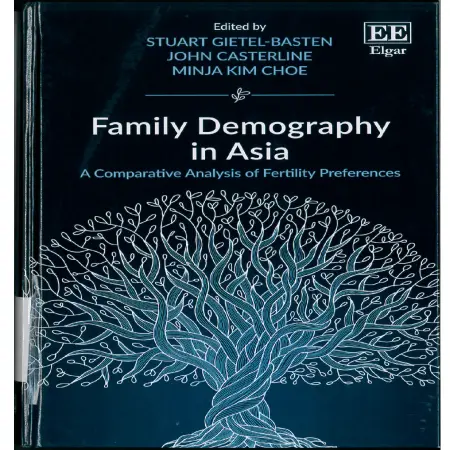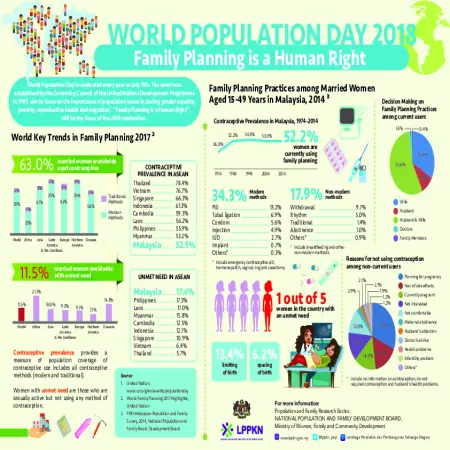Browse by Year
Results for Year : "2018"
|
|
Fertility preferences in Malaysia
Item Type: Book Section
Editor:
Year: 30/11/2018
Abstract: Most countries have been experiencing changes in fertility pattern over the last few decades. Fertility transition from high to low is a relatively recent phenomenon in Malaysia. The total fertility rate (TFR) had declined from 4.9 children per woman in 1970 to 4.0 in 1980. It has continued to fall and has reached the replacement level of 2.1 in 2010. This chapter provides the trend analysis and a comparative analysis of fertility trends to explain the fertility transition of Malaysia’s population. Data used in this study were obtained from Department of Statistics, Malaysia and Fifth Malaysian Population and Family Survey, 2014. The result of this study showed that the fertility rate between age groups was higher among Malay than other ethnics since 1991–2010. Across all ages, the fertility rate has a negative correlation with the educational level where women with tertiary education tend to have fewer children compared to less educated women. This study also presents the fertility desire in Malaysia. There is a negative correlation between age group and fertility desire. In addition, the desire to stop childbearing is found to be stronger when women have had three living children. The findings of this study will help policy makers to plan programmes to improve the fertility rate in Malaysia.
|
|
|
|
|
|
Family planning is a human right
Item Type: Infographic
Editor:
Year: 00/07/2018
Abstract: World Population Day is celebrated every year on July 11th. The event was established by the Governing Council of the United Nations Development Programme in 1989, aim to focus on the importance of population issues including gender equality, poverty, reproductive health and migration. Family Planning is a Human Right, will be the focus of the 2018 celebration.
|
|
|
|
|
|
Fathers' bonding and self-esteem among trainees in the drugs treatment and rehabilitation center in Melaka
Item Type: Thesis
Editor:
Year: 00/05/2018
Abstract: The paper discusses a survey study that examined the father’s bonding and its relationship with self-esteem. A total of 97 trainees in Cure and Care Rehabilitation Centre (CCRC), Tiang Dua, Melaka who participated in the study had responded to questionnaires on aspects of fathers’ bonding and their self-esteem. Analysis of correlation between fathers’ bonding and self-esteem were performed. Frequency count, percentage and mean were also calculated to examine the parenting involvement among fathers. The Pearson r Value, the significant and t-Test were used to the objectives of the study. Results indicated that 65% have lower bonding with their father’s whereas only 35% have had a high father’s bonding. The t-test also showed there is non significant correlation in the index of father’s bonding with self-esteem (Sig=.402 and r value= -0.086). However, the respondents felt that their fathers were unfriendly and had little communication with them. The correlation between fathers’ bonding and their self-esteem was rather low. This implies that the roles of father in parenting need to be examined further.
|
|
|
|







